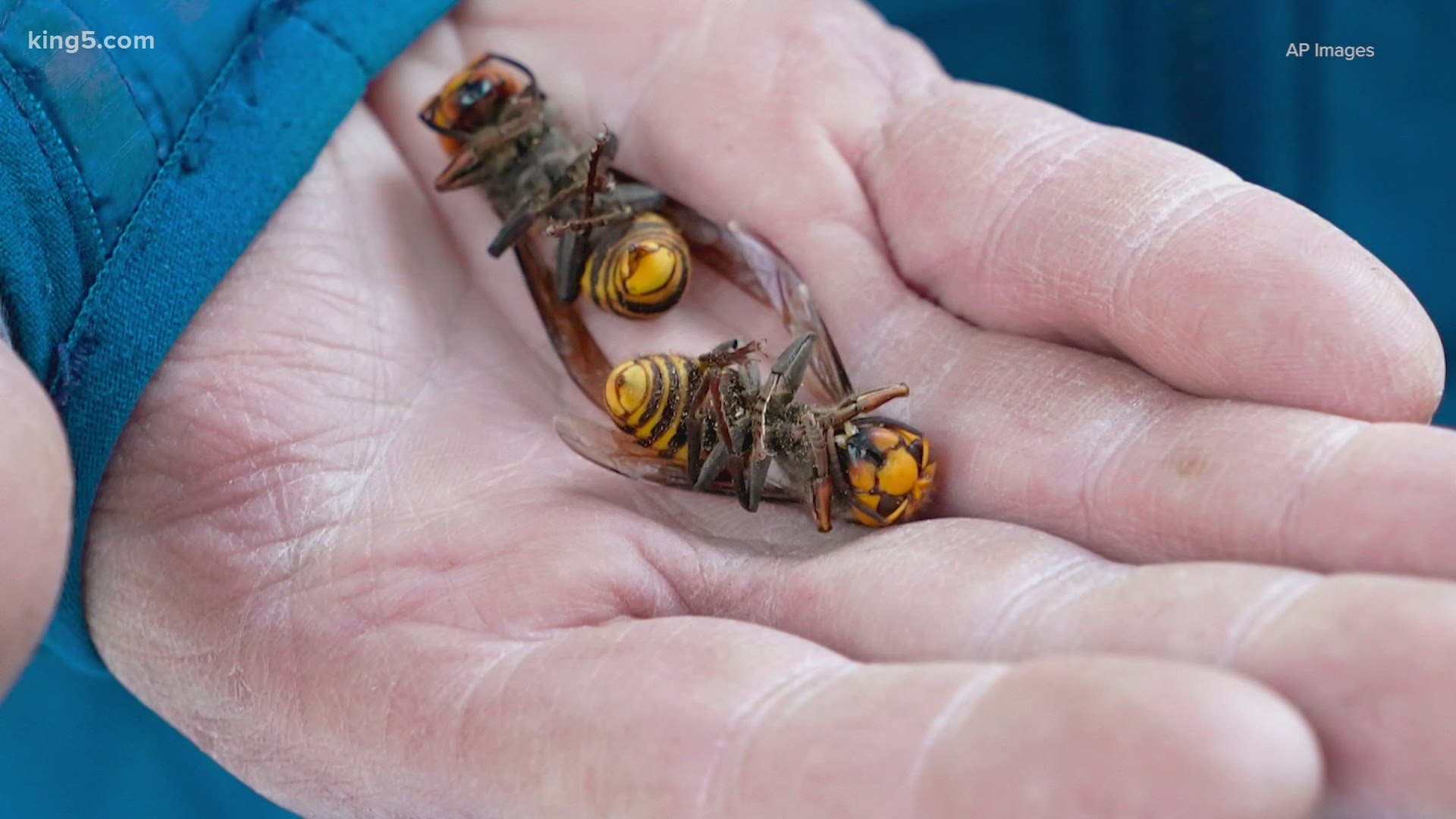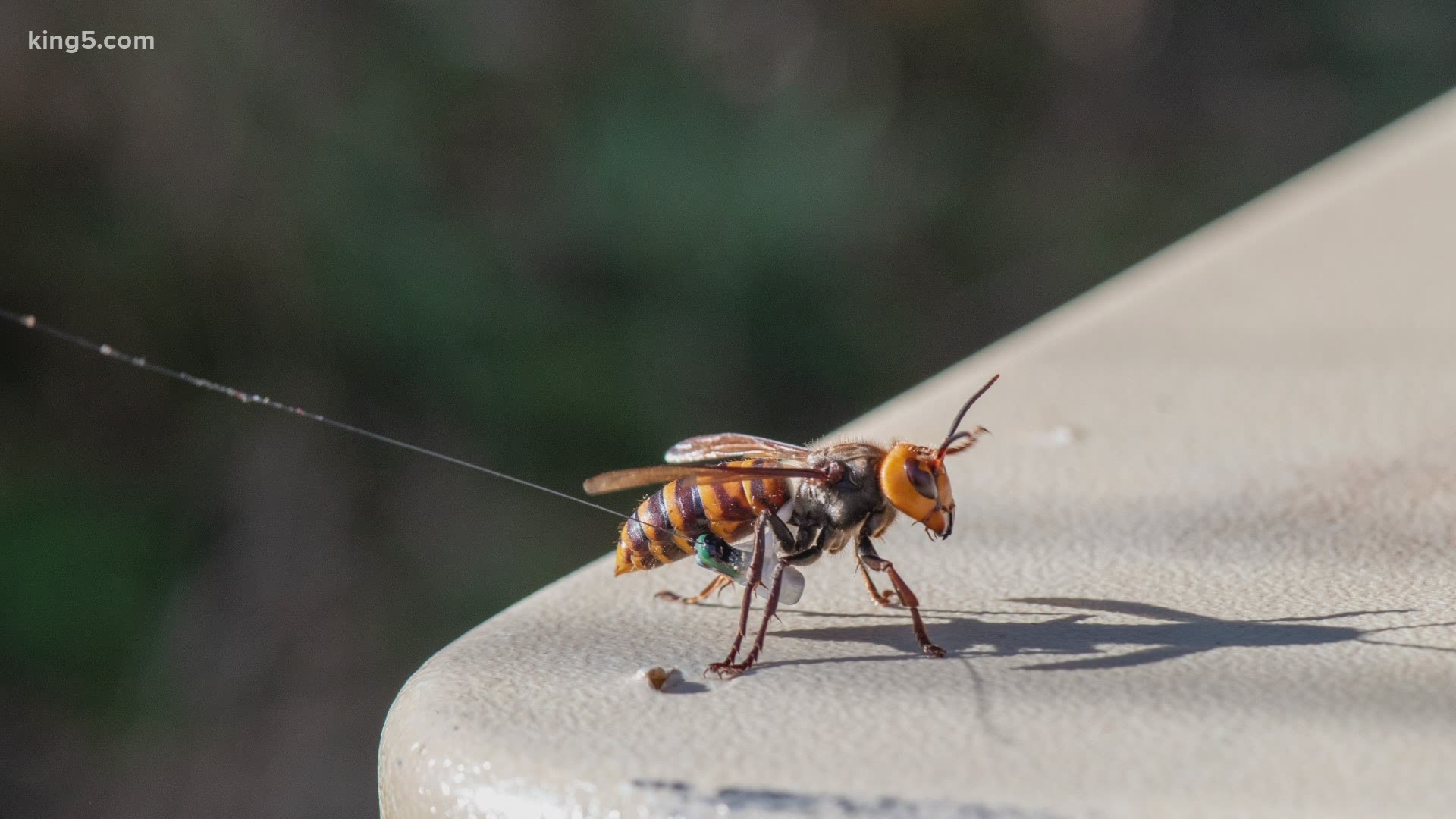BLAINE, Wash. — The first Asian giant hornet nest found in the United States was successfully eradicated from a tree in Whatcom County, according to the Washington State Department of Agriculture (WSDA).
Several days after 98 of the hornets were captured, entomologists discovered two Asian giant hornet queens in the same tree as the nest.
WSDA is working to determine if the hornets were two virgin queens or if it was one virgin queen and the old queen.
WSDA has removed the section of the tree with the nest and plans on opening it on Thursday.
Heavily protected crews with WSDA eradicated the nest early Saturday morning by vacuuming the hornets out of the nest. The nest was first discovered Thursday in a tree cavity, about 10 feet up, on private property in Blaine. The property owner gave WSDA permission for the nest to be eradicated and for staff to remove the tree if necessary.
Crews with the WSDA Pest Program vacuumed 85 hornets from the tree cavity into large canisters Saturday. Another 13 live hornets were collected with a net while crews observed the nest on Friday.
No one was stung or attacked during the eradication.
“The eradication went very smoothly, even though our original plan had to be adapted due to the fact that the nest was in a tree, rather than the ground,” managing entomologist Sven Spichiger said. “While this is certainly a morale boost, this is only the start of our work to hopefully prevent the Asian giant hornet from gaining a foothold in the Pacific Northwest. We suspect there may be more nests in Whatcom County.”
The WSDA said Monday all 85 hornets that were vacuumed from the nest on Saturday were alive later that day. The department said the specimens will be used for research purposes.
The crews had to wear heavy-duty suits to protect themselves from the Asian giant hornets, which can deliver painful stings to people and spit venom. However, they are the biggest threat to honeybees that farmers depend on to pollinate crops.
According to the WSDA, the Pest Program team stuffed dense foam padding into a crevice above and below the entrance to the nest, then wrapped the tree with cellophane. This left only one opening in the tree which is where crews inserted a vacuum hose to remove the hornets.
When the hornets stopped coming out, WSDA crews pumped carbon dioxide into the tree to kill or anesthetize any remaining hornets. The tree was then sealed with spray foam and wrapped again in cellophane, the WSDA said. Asian giant hornet traps were placed nearby to potentially catch any surviving hornets.
The WSDA Pest Program plans to cut down the tree in the coming weeks to see how big the nest was. Entomologists would also like to determine if the nest had begun to produce new queens.
WSDA entomologists have spent weeks searching, trapping and using dental floss to tie tracking devices to Asian giant hornets in an effort to find the nest and destroy it.
The Asian giant hornet was first spotted in Washington state in 2019 and since then the WSDA has been on the hunt for the invasive species, which kills bees and takes the bee larvae to feed their own young.
At least 15 Asian giant hornets have been reported in Whatcom County over the last few months. The state has been attempting to locate nests and eradicate the invasive pest.
The WSDA is asking the public to report any Asian giant hornet sightings and is asking residents to pay close attention to the direction of flight, which could help researchers find the location of a nest.
The department asks residents to exercise extreme caution if you see one as their stingers are longer than native bees and hornets, they can sting repeatedly and their venom is more toxic. However, officials said the invasive hornets do not pose a significant threat to humans and pets.
Experts predict that if allowed to fly free, the aggressive and invasive species will only spread throughout the Northwest.


